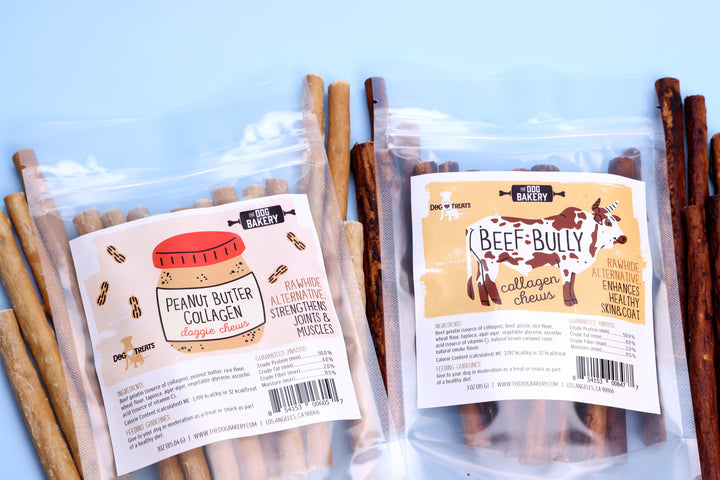Bred to Extremes: Examining the Ethical Quandary of Exotic Bullies
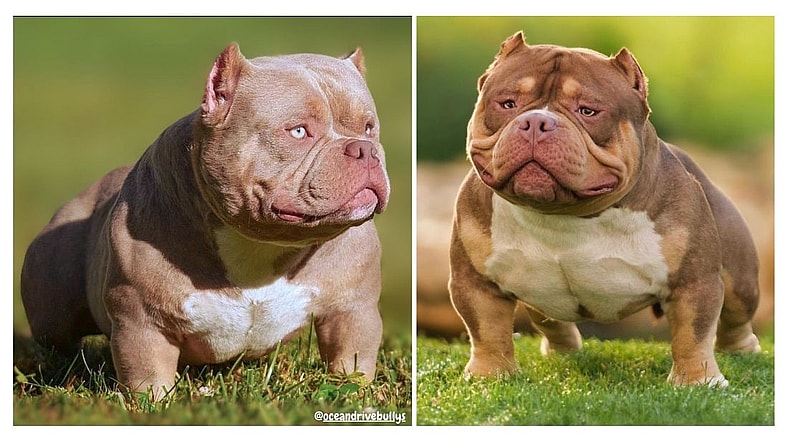
Within the Bully community, which has diligently worked towards rehabilitating the reputations of breeds like the American Pitbull Terrier, the American Bully, and Staffordshire Terriers, a contentious divide is emerging. This division has sparked intense debates and ignited passionate advocacy from both sides, threatening the unity that has been fostered for years.
At the center of this upheaval stands the controversial figure: the Exotic Bully.
This relatively new breed variation, with a history spanning less than two decades, has evoked both adoration and disdain among Bully enthusiasts. However, the absence of an established breed standard to safeguard the well-being of Exotic Bully bloodlines has become a primary concern for critics. They draw attention to the breed’s pronounced physical health defects, genetic abnormalities, and the growing incidence of health issues within the entire Exotic Bully population. On the other hand, proponents of the Exotic Bully are captivated by its exaggerated appearance and lend unwavering support to breeders committed to perfecting their bloodlines.
Fans of the Exotic Bully are growing in numbers, especially online where forums and discussion groups gain thousands of followers. Still, critics vehemently point to the Exotic Bully’s mixed-breed background, insistent that Exotics are not a true dog breed, and instead an affront to the efforts of ethical American Bully breeders.
Originally, the Exotic Bully was meant to be an extension of the American Bully—like the Pocket Bully—but quickly diverged from the American Bully breed standard. With little end in sight for the drama circling the Exotic Bully breed, we figured it was high time to dive into the controversy so you can form an opinion of your own.
What Is an Exotic Bully?
The Exotic Bully dog is a new breed variety developed sometime around 2008. The breed’s genetic framework starts with the American Bully with inclusions of secondary breeds like French Bulldog, Shorty Bull, English Bulldog, and more. By adding Bulldog genetics to American Bully bloodlines, breeders have produced a dog with more exaggerated features and a unique, unmistakable look.
While it’s fairly easy to recognize an Exotic Bully on the street, it’s not quite as easy for breed groups and breeders to come to an agreement on breed standards. Often described simply as having “Bulldog features” or being “compact and muscular,” the Exotic Bully community has not yet set universal guidelines for the breeding of these dogs.
With no accepted standard, Exotic Bullies with critical health problems and physical defects may be used for breeding, passing on genetic abnormalities, and compromising the health of all future generations. This lack of specific breed standards may also call into question the genetic/breed background of individuals within the breed.
Exotic Bully Looks & Desired Traits
Here’s how the IBC (International Bully Coalition) describes the Exotic Bully:
“The ideal “Exotic Bully” is a large and compact dog, with a large and powerful head, with a robust and muscular body.”
IBC (International Bully Coalition)
This description is close to or similar to the descriptions provided by other Exotic Bully registries, but as you may notice, it’s not very specific in terms of looks. To compare, let’s take a look at what the USBR (US Bully Registry) has to say about what an Exotic Bully should look like.
“The Exotic Bully should give the impression of great strength for its size, compact to medium/large size dog with a muscular body and blocky head. The Exotic Bully should have the appearance of heavy bone structure with a bully build, the breed is a “head and front breed” chest should be wide to match blocky head type. The Exotic Bully should NOT look like an American Bully.”
Some dog breeds are so standardized that individuals of the breed could be mistaken for one another. Not so with the Exotic Bully. Individuals of this breed may vary enormously, especially since there are few established breed “faults” to exclude a deformed Exotic Bully from breeding programs.
TLDR—Exotic Bully breeders agree on a few things. Exotics should have the following physical traits:
- Muscular body
- Large head
- Heavy/robust bone structure
Exotic Bully Health Problems
One of the most pressing arguments against the breeding of the Exotic American Bully is the seemingly high risk of producing puppies with serious health issues. In a Reddit thread of vet techs discussing their experiences with Exotic Bullies, one user shared a stark and disturbing image.
“[I] had a blocked “exotic bully” whose entire anatomy was such an abomination; we were all so appalled. He’s not even a year. He was of course intact, 4/5 of the body weight was the head and forelimbs, incredibly brachycephalic (as bad as an English bulldog), had a prolapsed [urethra], and oh god, the larynx/pharynx was a disaster,” read the comment. “When intubating, the larynx had a full 90-degree drop into the trachea and the surrounding anatomy so compressed I could barely see.”
Reddit thread
Some common health issues associated with Exotic Bullies include:
- Skin issues—skin diseases, skin allergies, skin infections, etc.
- Eye and vision problems—cherry eye, cataracts, glaucoma, progressive retinal atrophy, etc.
- Hip and elbow dysplasia
- Back problems
- Congenital heart disease
- Breathing problems—persistent bronchitis, shortness of breath, noisy breathing, etc.
- Short lifespan—sometimes as little as 3 years, but 5–7 on average
Exotic Bully History: The Birth of a New Breed
While the exact origins of the Exotic Bully are a little foggy, the most accepted narrative is that the breed emerged around 2008. Jorge Soto is the breeder most credited with creating what would eventually become the Exotic Bully and still runs his breeding program, The Bully Campline.
The first few generations of Exotic Bullies were clear crosses of American Bullies and varieties of Bulldog. As breeders began to find their desired look, they slowed their infusion of secondary breeds, and so the Exotic Bully found itself nearing purebred status—at least in the eyes of some.
Why Is the Exotic Bully Controversial?
The controversy surrounding Exotic Bullies stems from a complex web of factors that have triggered intense debates. The main controversies are
- The euthanasia rates of Pitbull-type dogs and Bully breeds.
- Poor Breeding Conditions
- Health & Genetic Testing Standards
1. High Euthanasia Rates
In 2018, residents of St. Joseph County, Indiana signed a petition trying to bar an Exotic Bully event from taking place on local fairgrounds, citing overcrowding of local shelters and excessive abandonment of Bullies.
“The overpopulation issue resulting from excessive breeding of these dogs is severe. Tragically, this breed has the highest euthanasia rate in our shelters. National statistics estimate that for every 1 Pitbull placed in a loving home, 599 are euthanized,” read the petition. “Our goal is to aid these dogs, not harm them. Promoting the breeding of Pitbull-type dogs and Exotic Bully mixes is not in the best interest of these animals.”
Petition signed by residents of St. Joseph County, Indiana in 2018
2. Poor Breeding Conditions
Exotic Bullies have also gained attention for alleged poor breeding conditions. For example, in 2021, an Exotic Bully breeder was arrested on animal cruelty charges after authorities uncovered 20 adult dogs and 4 Exotic Bully puppies living in unsafe conditions and showing signs of obvious neglect.
“The abuse and deplorable conditions were tremendously disheartening, to see what the animals lived in and what they were subjected to”
Animal Control Director Bonnie Kanicki in an interview with Michigan Live.
This breeder sold his Exotic and micro Exotic Bully puppies via Facebook.
3. Health and Genetic Testing Standards
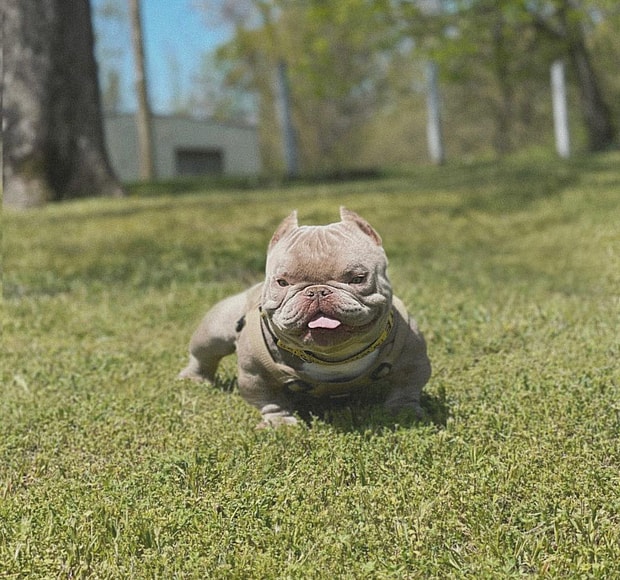
Amid the Exotic Bully controversy, skeptics have raised significant doubts regarding the health and genetic testing standards employed by Exotic Bully breeders. Accusations of prioritizing appearance over well-being have been leveled against breeders, alleging their intentional production of dogs destined for a life of physical discomfort and shortened lifespans.
Daniella Dos Santos, Vice President of the British Veterinary Association, has voiced genuine concerns about the growing popularity of Exotic Bullies and the associated health implications. In an interview with The Telegraph, Dos Santos emphasized the range of serious issues faced by these dogs.
“We are talking about really painful skin folds, where the skin is folded over and you get painful infections…a lifetime of eye problems, they can’t shut their eyes properly…spinal problems, mobility problems…and a lot of them are flat-faced so come inherently with breathing problems.”
Daniella Dos Santos, Vice President of the British Veterinary Association
In tandem with these health concerns, dishonest advertising practices employed by some Exotic Bully breeders have come under scrutiny. Dos Santos further commented on this matter, shedding light on the misleading portrayal of these dogs in the sales process.
“Often these dogs are advertised for sale via Instagram and other social media platforms. Instead of being realistic about what these deformities mean, [Exotic Bullies] are advertised as glamorous, rare, and desirable”
Daniella Dos Santos
The crux of the Exotic Bully controversy
The crux of the Exotic Bully controversy lies in the opposing views surrounding the health and safety of these dogs. One side expresses deep apprehension about the potential risks they face, while the other fervently supports and trusts the breeders they believe in.
By critically examining the health concerns and ethical issues raised by skeptics, it becomes clear that the Exotic Bully controversy encompasses a fundamental clash between the advocates for the well-being of these dogs and the enthusiasts who back the breeders they trust.
Introducing the “Clean” Exotic Bully
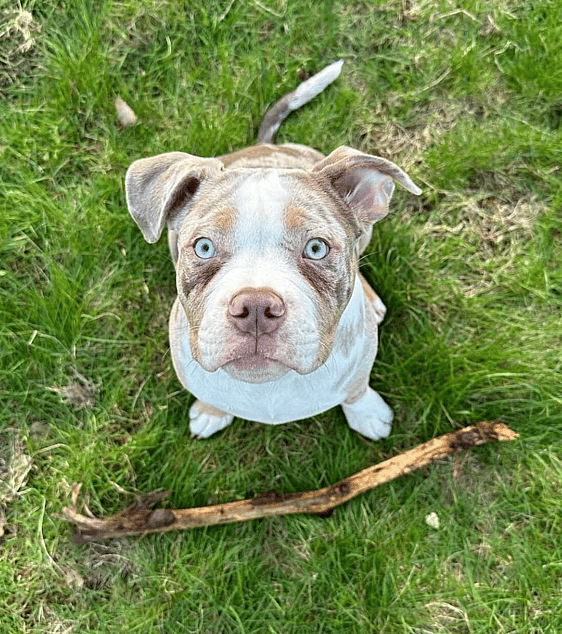
It would be ridiculous to assume that members of the Exotic Bully community don’t also have concerns for the health of the breed. One movement that has begun to gain traction is the Clean Exotic Bully movement, which aims to produce less extreme Exotic Bullies with less risk of serious health defects. In essence, Clean Exotic Bully breeders say they are committed to breeding ethically.
Clean Exotic Bullies typically have less exaggerated features, more proportional limbs, and fewer congenital defects.
Who Is Breeding Exotic Bullies? Trusted Exotic Bully Registries
If you’re interested in learning more about Exotic Bullies from the people breeding them and advocating for their wellbeing, there are a select number of registries that now recognize the Exotic Bully and/or are associated with well-known breeding programs.
The International Bully Coalition was created by Jorge Soto, who is often credited with creating the Exotic Bully breed. The IBC was the first to provide a breed standard and has one of the most extensive lists of “breed faults” that ensure breeders do not breed dogs with serious defects.
The US Bully Registry is perhaps the most well-known registry to accept the Exotic Bully and has in many ways legitimized the movement.
The American Bully Registry is less well-known, but steadily growing to become one of the most influential registries that recognize the Exotic Bully.
You can also find Clean Exotic Bully breeders and registered bloodlines through groups like The Clean Exotic American Bully Board which has 53,000 members following their recommendations.
Exotic Bully FAQ
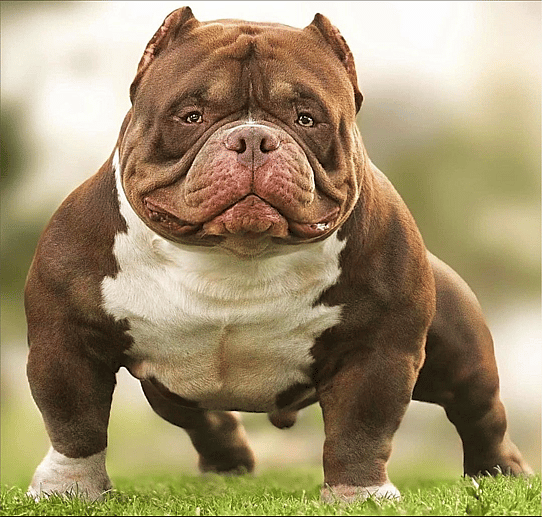
Exotic Bullies get a lot of attention for their extraordinary looks, but how much do people really know about this breed? Here are a few of the most common questions readers ask about the Exotic Bully breed.
The three foods that are super healthy and that almost every dog loves, even the pickiest dogs, are:
1. The Farmer’s Dog.
This is a fresh-frozen food that’s delivered to your home in just the right amounts for your dog. There are a number of fresh frozen dog foods available on the market and I tested them all. The Farmer’s Dog came up the winner with my picky dogs. You can see the fresh frozen food test here.
Save 60% on your first order
—
2. Sundays Food For Dogs
This is an air-dried food. It has the convenience of kibble (just pour it in the bow) but is much much healthier. It’s like little pieces of jerky, so dogs go crazy for it. There are a number of air-dried foods on the market. My dogs tested 3 of them. You can see the results of the air-dried food test here.
Get 35% off your first order + free shipping w/ code ROCKY35
3. We Feed Raw.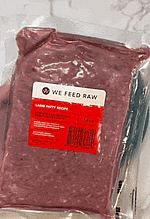
This raw food for dogs comes delivered to your home is perfectly sized portions for your pup. They primarily source their ingredients from trusted U.S. farmers, with two exceptions: venison and lamb. These ingredients are sourced from New Zealand, where some of the highest-quality and most ethically raised venison and lamb can be found. Pasture-raised and grass-fed and finished, we highly recommend trying these formulas if you’re interested in the best-quality ingredients. Save 25% on your first order.
Supplements:
I highly recommend using a supplement on your dog’s food, not matter what you feed them, to ensure the meal is balanced and they are getting all the right supplements to help them stay healthy. The supplement I use is called The One from Front of the Pack. It has 12 ingredients that have been clinically-proven to keep your dog’s joints, skin, heart, digestion, and even their breath in tip-top shape. It’s also a powder, so easy to sprinkle on your dog’s food. For a limited time, when you buy one month you get a second month free.
How long do Exotic Bullies live?
The average Exotic Bully lifespan is around 5–7 years, though reports vary, and actual data is scarce.
How big do Exotic Bullies get?
According to IBC standards, male Exotic Bullies should stand no more than 16.5 inches tall and weigh no more than 81 pounds. Females should stand no more than 16 inches tall and weigh no more than 70 pounds.
Micro Exotics and the Exotic Pocket Bully are significantly smaller at just 11-14 inches tall and under 40 pounds in weight.
How much is an Exotic Bully puppy?
Sometimes used as a status symbol, Exotic Bullies can earn their breeders enormous sums of money, with the average Exotic Bully price starting at around $4,500–$5,000. In some rare cases, Exotic Bullies have been sold for as much as $50,000.
What is the difference between a Pocket Bully and an Exotic Bully?
-Pocket Bully: This term is typically used to describe a smaller-sized American Bully. The American Bully breed itself is a relatively recent development that originated in the United States, bred for companionship and showcasing qualities of strength and loyalty. A Pocket Bully, as the name implies, is a smaller variant of the American Bully. The exact size range can vary, but generally, Pocket Bullies are shorter and more compact, often weighing less than their standard-sized counterparts. However, they should still exhibit the same breed characteristics and traits.
-Exotic Bully: The term “Exotic Bully” refers to a variant or subcategory of the American Bully breed. Exotic Bullies are known for their exaggerated features and distinctive appearance, often featuring a heavily muscled build, a wide and pronounced head, a shorter muzzle, and a stocky frame. They are bred to emphasize certain physical characteristics that some enthusiasts find appealing. However, it’s worth noting that the extreme features associated with some Exotic Bullies have generated controversy and concerns about health and welfare, as they can potentially impact the dog’s ability to breathe, eat, or function normally.
Are “Bully Breeds” considered Pitbulls?
All Pitbulls are Bully Breeds, but not all Bully Breeds are Pitbulls! The Bully Breeds include Pitbull-type dogs like the American Pitbull Terrier and the Staffordshire Terrier but also include non-Pitbull-type dogs like the Boxer and the Rottweiler.
Do merle Exotic Bullies exist?
There are a few examples of the Exotic merle Bully, but merle is typically not accepted as breed standard by Bully registries. This is because of the high potential for health issues when intentionally breeding merle dogs, so for this reason, there are very few merle Bullies.



